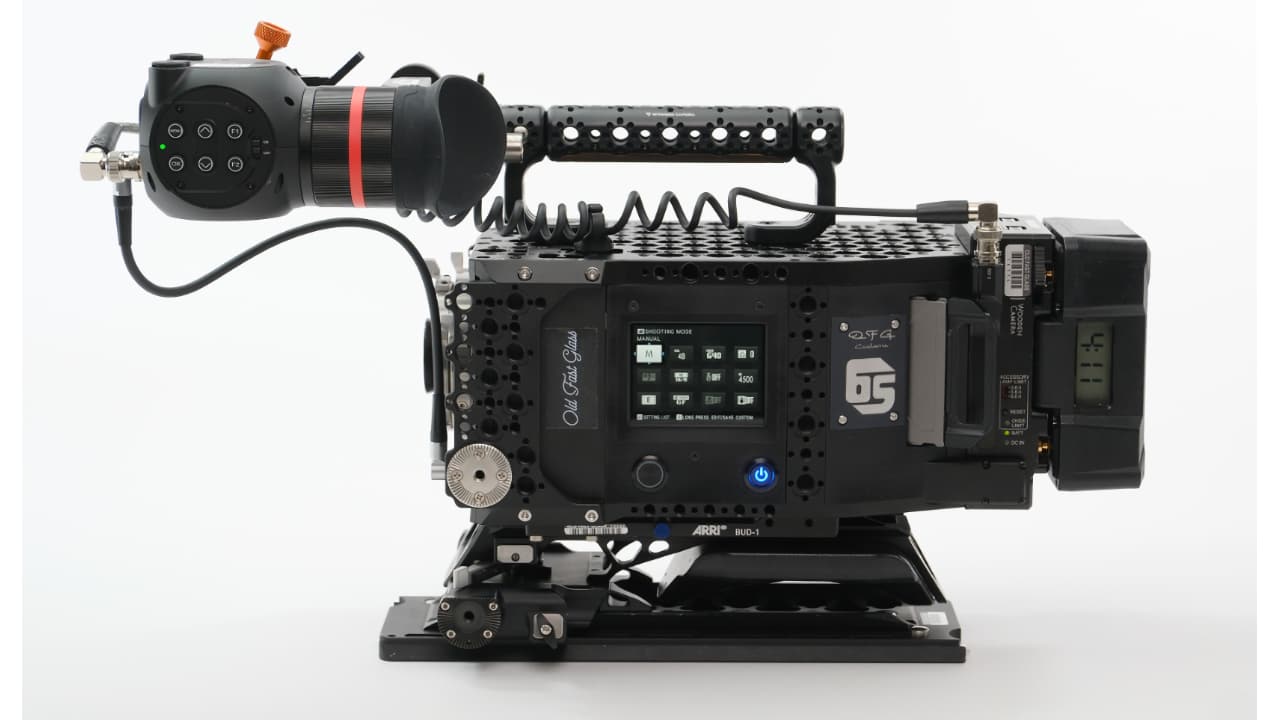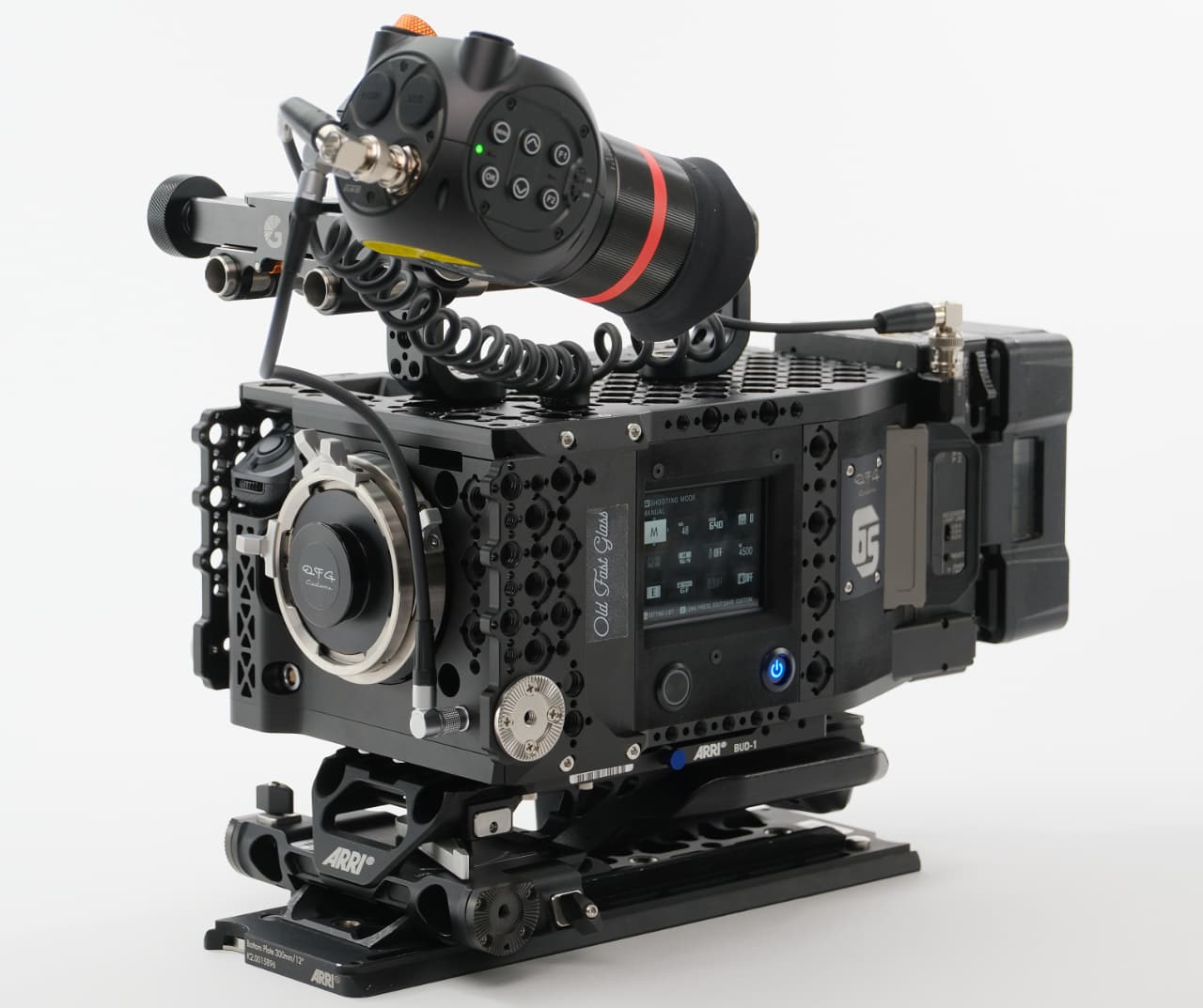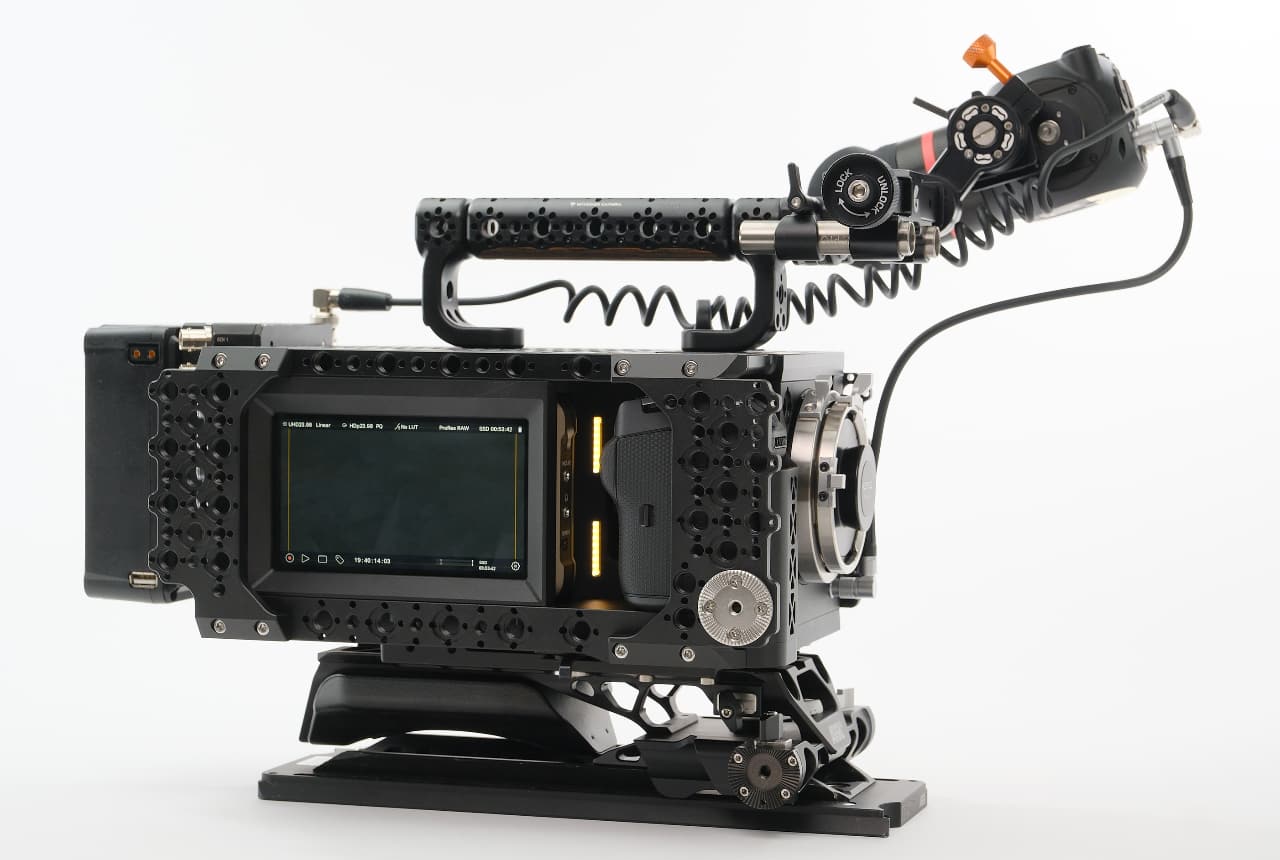
Walk around the NAB show floor and you can find some very interesting things in the most unlikely of places; with the OFG Customs 65 being shown on Fujifilm’s own booth possibly as unlikely a combination as any.
Several interesting things came up at the NAB show on Monday, but the problem is, quite a lot of them happened behind closed doors, revealing things which will become public in the next few months. If we talked about them here, this article would end up looking like one of those cold-war documents that’s received a heavy dose of black ink from the censor. Manufacturers like to surprise people.
What’s a bit less common is when people surprise manufacturers. That’s what seems to have happened when Old Fast Glass rebuilt Fujifilm’s GFX 100 II into a pretty good approximation of a 65mm production camera, the OFG Customs 65. At first glance, the thing looks very much like a large-format moviemaking device, being somewhat wide and flat, that’s been wrapped in a really enormous set of cheese plates. It isn’t small or light, although it is reasonably well balanced, and shouldering it reminds us why weight is sometimes no bad thing when it’s not trying to torque our arms off at the shoulder. The Custom 65 is no small beast but it rides reasonably well - certainly much, much better than trying to handhold almost any imaginable combination of the base GFX 100 II and the Atomos recorder.
Adding capabilities

The original GFX 100 - which we reviewed a while back - was a giant among stills cameras in every sense of the word, but it was not a particularly spectacular video camera. It would shoot really-big-chip video, but that was very clearly not its core purpose, being limited on frame rate and resolution. Appropriately, the GFX 100 II expands enormously on this, being capable of 8K internal 10-bit 4:2:2 internal recording, and much more to the Atomos recorder in 12-bit ProRes Raw. The Mark 1 camera would not have been worth modifying in this way. The Mark 2 certainly is.
The amount of actual hardware modification made to the camera is actually reasonably minimal. The LCD has been swung out ninety degrees from the back of the camera so it can be used from a more conventional position at the side of the camera. The rear-mounted LCD makes rigging awkward on everything from the tiniest mirrorless camera to things like Blackmagic’s Pocket range, and this modification is more or less a sine qua non. If there’s a reason for caution here it’s that the LCD is now on the camera’s left, the operator side, whereas a camera intended for high-end production work (compare Alexa, Burano) would put it on the right, accessible to the assistant. Presumably this is a practicality imposed by the internal structure of the base GFX 100 II, which puts the flex PCB which drives the display panel on its left.
65 - more than just a number

The number 65 has been widely associated with this camera, although that number has increasingly been used to refer to more or less anything bigger than 8-perf 35mm frames. The sensor on the GFX 100 II is 43.8mm wide, which is considerably wider than the 34-ish millimetres of VistaVision, but not actually as big as the 52.48mm-wide 5-perf 65mm frame. At the same time, the GFX 100 II sensor (which has a native resolution of about 11.8k by nearly 9k) has more or less a 1.33:1 aspect ratio, which, in the context of 65mm negative, tantalisingly beckons the word IMAX. Of course, the sensor in the GFX 100 II, and thus the OFG Customs 65, is nothing like the size of a 15/65 frame. Many people will also prefer to shoot unscaled resolutions on a camera like this, as the internal scaling is often not particularly wonderful, which may reduce the effective sensor size further depending on the mode in use.
Regardless, the sensor is certainly big enough to pack on a large number of high quality pixels, and to engage complex issues of lens selection. We quickly encounter the vexed question of what “coverage” really means, since many lenses will cast light into the corners of a large sensor without actually creating a particularly nice image there. How much we care about that will depend on the lens, the selected sensor format, and our appetite for optical grunge - but this is certainly a medium format camera and may require medium format lenses, or at least lenses based on medium format designs. The OFG conversion includes PL and LPL mounts which will accommodate a lot of things.
Out in the open
Perhaps the biggest surprise, though, is not that this thing exists. OFG is not the first organisation to make a hardware modification to someone else’s product. The surprise is that it’s being shown on Fujifilm’s booth. Large companies tend to be hugely conservative about this sort of thing, and some have taken quiet offence at the idea that a company design somehow needs improving, or at least been cautious about the reliability of the mod and its potential effect on the product’s and the company’s reputation. By featuring the camera on its booth, Fujifilm demonstrates an understanding of filmmakers and their tools, which enjoy a long history of exactly this sort of collaborative innovation. It reflects well.
It’s not quite clear where the OFG Customs 65 might find use; it’s a tool for the high end, and the high end too is a place of caution and conservatism which already has access to very high performance cameras. It’s easy to imagine it going out on commercials and music videos. As to other things - we’ll watch with interest.


Comments